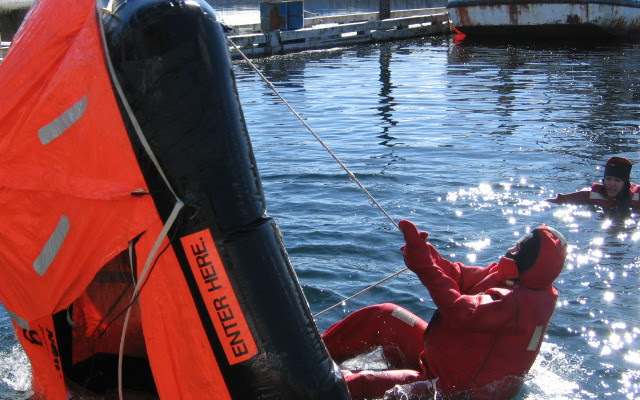Within just a few weeks of an AMSEA Drill Conductor training course, the crew of the F/V Talia went out for a halibut trip. On a stormy night with a full load of fish, the vessel sank.
However, the crew was able to get out a clear mayday call before escaping into the life raft. Though they were scared, the crew was able to cooperate in their helicopter rescue as they had practiced in the training workshop.
The captain reported to the AMSEA staff that it was so helpful to know what to expect, what to do — including paying close attention to the instructions of the rescue crew — and their evacuation when off without a hitch.
"Knowing what to do during the rescue lowered our anxiety and increased our confidence that everything was going to be OK,” the crew reported to AMSEA. “The rescue operation went just like they described it would. The training helped us know what to expect!”
For the training, AMSEA had invited the Coast Guard to bring one of their rescue helicopters to the training so fishermen could see first-hand how a helicopter crew facilitates a rescue at sea, how to operate a dewatering pump and prepare a patient for a medevac from a vessel. The crew was also able to ask questions of the pilots and rescue swimmer.
Safety, survival and first-responder training helps communities beyond fishing, as well.
One New Jersey fisherman who trained with Fishing Partnership Support Services wrote a testimonial after helping to save the life of a neighbor’s young child.
“I am making all the guys take training. I had to do [CPR] today to a 5-year-old next door. They pulled him out of the pool.”
Jessica Hathaway is a senior fisheries and seafood policy consultant for Ocean Strategies, a fisheries-first public affairs firm. She is based in Portland, Maine.






